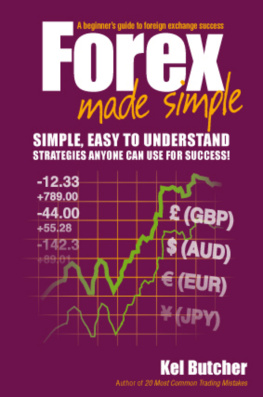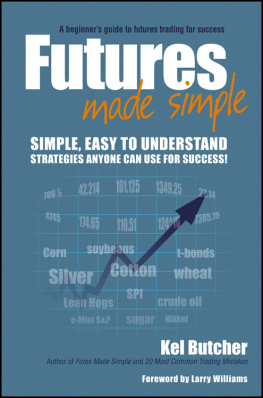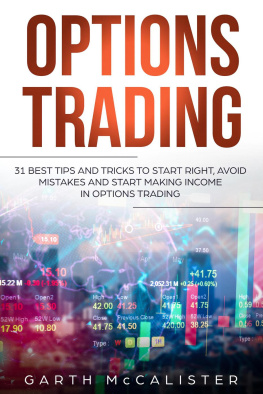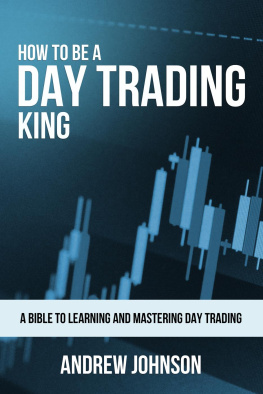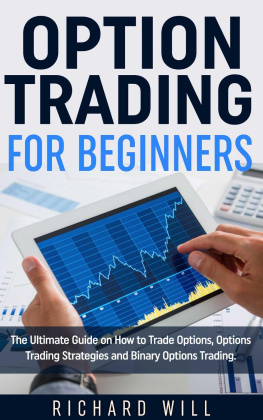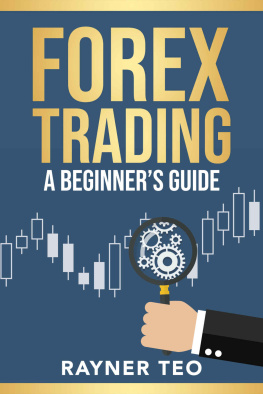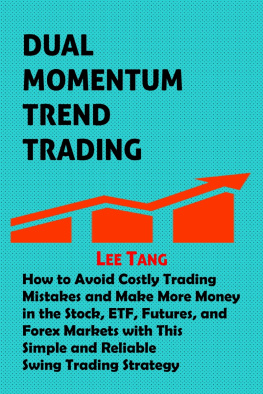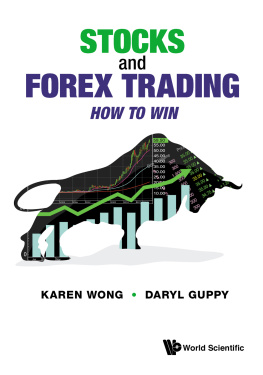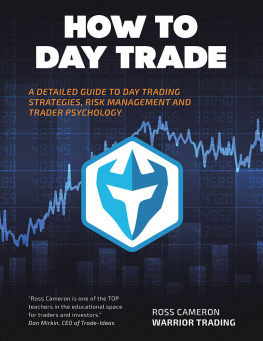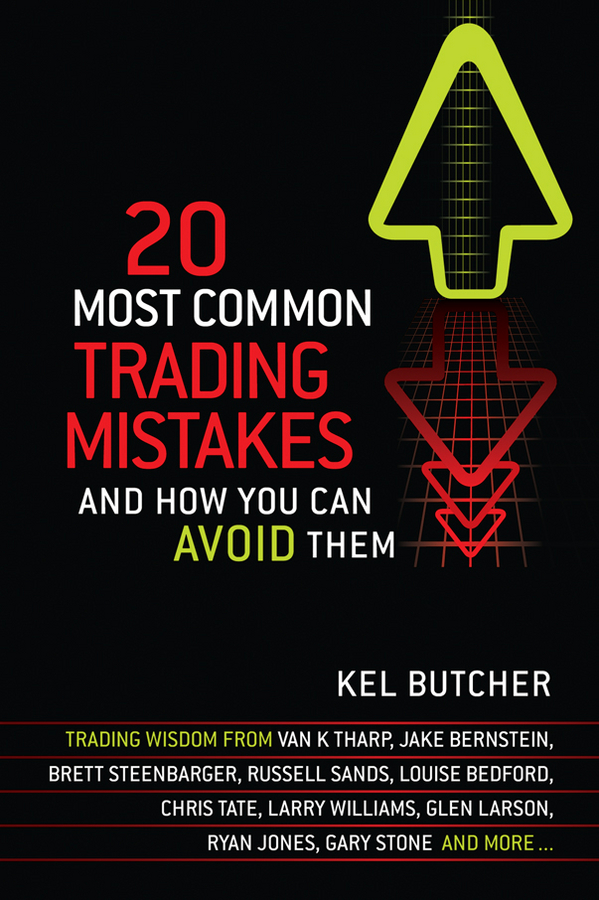Contents

First published 2009 by Wrightbooks
an imprint of John Wiley & Sons Australia, Ltd
42 McDougall Street, Milton Qld 4064
Office also in Melbourne
Typeset in Berkeley LT 11.3/14pt
Kel Butcher 2009
The moral rights of the author have been asserted
Reprinted in 2011
National Library of Australia Cataloguing-in-Publication entry:
Author: Butcher, Kel.
Title: 20 most common trading mistakes: and how you can avoid them/Kel Butcher.
ISBN 9781742169293 (pbk.)
Notes: Includes index.
Subjects: Investments.
Stock exchanges.
Investment analysis.
Dewey Number: 332.02401
All rights reserved. Except as permitted under the Australian Copyright Act 1968 (for example, a fair dealing for the purposes of study, research, criticism or review), no part of this book may be reproduced, stored in a retrieval system, communicated or transmitted in any form or by any means without prior written permission. All enquiries should be made to the publisher at the address above.
Cover image: aispl, 2009. Used under license from Shutterstock.com .
Figures on pages 118120: Microsoft Excel screen shot(s) reprinted with permission from Microsoft Corporation.
Disclaimer
The material in this publication is of the nature of general comment only, and does not represent professional advice. It is not intended to provide specific guidance for particular circumstances and it should not be relied on as the basis for any decision to take action or not take action on any matter which it covers. Readers should obtain professional advice where appropriate, before making any such decision. To the maximum extent permitted by law, the author and publisher disclaim all responsibility and liability to any person, arising directly or indirectly from any person taking or not taking action based upon the information in this publication.
There are no mistakes. The events we bring upon ourselves, no matter how unpleasant, are necessary in order to learn what we need to learn; whatever steps we take, theyre necessary to reach the places weve chosen to go.
Richard Bach
Mistakes are the only universal form of originality.
Mason Cooley
Acknowledgements
Writing this book would not have been possible without the involvement of the 18 interviewees. Each of them gave freely of their time among their own busy schedules to ensure deadlines were met and editors kept happy. My utmost thanks go to them for their open, honest and often candid responses to the questions that were posed to them. I would also like to thank them for their ongoing contribution to the education of other traders throughout the world. I am honoured that each of them has willingly contributed to this book.
As always, I am grateful to, and inspired by, the many other traders and students of the markets I have met over the years who have encouraged and supported me in my journey.
Kristen Hammond and the staff at John Wiley & Sons have once again been pivotal, encouraging and supportive as a vague idea of yet another trading book crystallised into the book you are now reading.
My wife Cate and sons Jesse and Ollie provide the balance, support and love that makes it all worthwhile!
Carpe Punctum
Introduction
This is a book about trading mistakes. It is not, however, a negative book. Each mistake is followed with the information and steps you can take to ensure these mistakes need not happen to you. The mistakes discussed within the pages of this book are the more common mistakes made by traders in general, the world over, regardless of the markets they trade. They apply to stock market traders, foreign exchange traders, traders using tic charts to scalp the equity indexes, traders using long-term breakout systems to trade futures or stocks, and everything else in between.
While the title refers to 20 mistakes, there are actually far more than that covered within the examples and experiences shared by the interviewees. I encourage you to read and study the contents of each chapter carefully and look out for the hidden gems. Often the remedies for the varying mistakes are similar one remedy might cure a number of ills.
Trading is a wonderful business for those prepared to take the time to learn about themselves and the markets and to do the hard work necessary to become consistently successful. Disciplined, patient and consistent traders will be well rewarded for the time and effort they put in. Those who lack discipline and patience will suffer at the hands of the master of fear and the mistress of greed. They will bounce around from one idea to the next, one broker to the next and one system to the next with no clear plan in place for what they are doing and what they hope to achieve. Eventually they will dwindle away their trading accounts to zero, or stop trading altogether through frustration and stress.
Too often impending traders are sold the dream that trading is easy, and that once you have mastered a few basic skills you can lie on a beach on a deserted tropical island and watch the cash roll into your bank account in a protected tax haven. Nothing could be further from the truth. As with any profession or business, trading requires learning and skill development, a plan and lots of blood, sweat and tears before it becomes rewarding. Despite the media hype, no-one is an overnight success in tradingor any other venture in life, for that matter. Many of the traders interviewed in this book struggled for years before becoming an overnight sensation or whiz kid. They were then able to build on these experiences and what they had learned from the markets to become well recognised for their trading prowess.
All of the interviewees will openly admit that they never stop learningand neither should you. The markets will continue to change and evolve in the years ahead as new products are made available and technology continues to advance and change the way we trade. As traders we need to constantly evolve, learn and grow with these changes. Through education, awareness and studying the results and experiences of those who have gone before us, we can continue to actively participate in these markets without necessarily having to reinvent the wheel.
Regardless of your level of skill or knowledge you will learn from the experiences shared by the traders and market professionals who have contributed their time and knowledge to this book. Be it the simple necessity to always trade with a predetermined stop-loss, the personal issues of how to manage your own biases and psychology, or more complex issues concerning money management and risk management models, the examples and testimonials of these market professionals are enlightening and encouraging. Many have been happy to openly share personal examples of the mistakes they have made and how they have learned from these mistakes. This honesty and acceptance is what makes them all true professionals in their field.
If you aspire to consistent, rewarding and profitable trading you will gain much from reading the stories shared within.
Trade well.
Kel Butcher
MacMasters Beach, NSW, Australia
April 2009
Its not my fault I didnt even know it was a mistake!
Mistake 1: defining a trading mistake
The greatest mistake you can make in life is to be continually fearing you will make one.
Elbert Hubbard , The Note Book, 1927
My guess is that most of you are probably inquisitive as to what constitutes a trading mistake. Given that this is a book about trading mistakes and how to avoid them, it seems only logical that the first chapter needs to define what mistakes are, and highlight some of the many mistakes that are discussed in the following pages.


